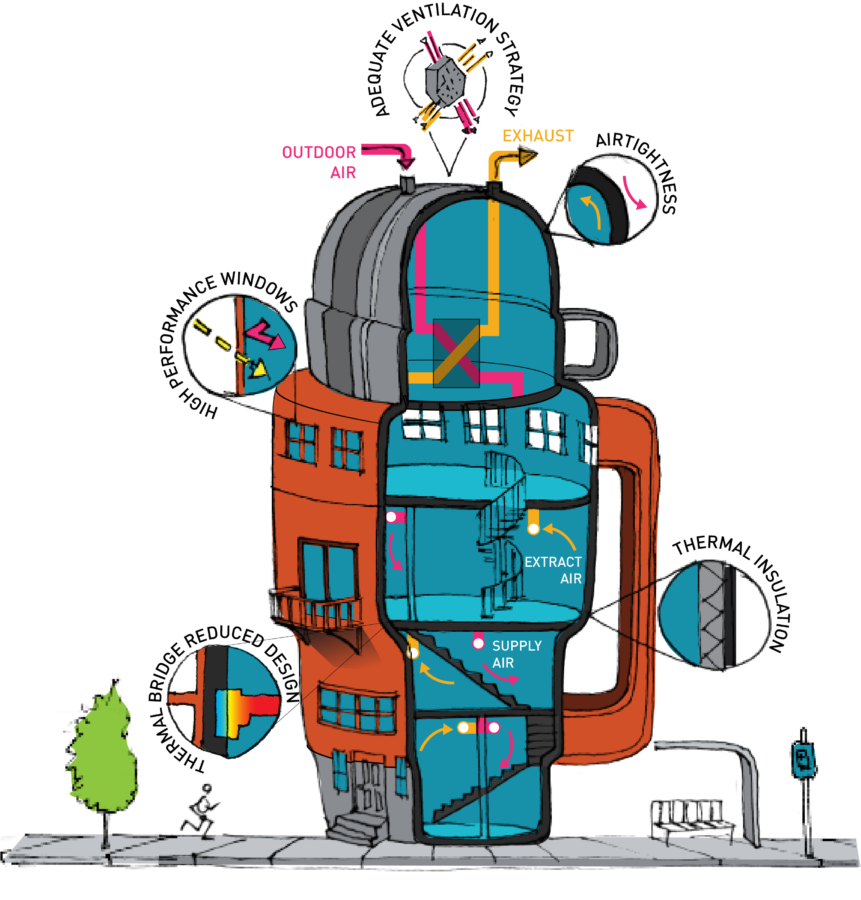Insights
Nov 9, 2020 _ insights
Passive House Design: A Key to Sustainable Community Building
A New Model for Development
A vibrant community, Pittsburgh’s Uptown neighborhood is taking bold steps to counteract decades of divestment that have resulted in vacant properties, dangerous pedestrian corridors, and the poor air quality that comes with being treated as a pass-through neighborhood between the city’s largest employment centers. It’s a familiar experience, one shared by many communities across the country. But Uptown is developing an innovative approach to forging a better future.
For many neighborhoods like Uptown, investment is needed to improve the safety and environmental quality of its streets and buildings, but too often investment means higher rents, services designed for newer, wealthier residents, and ultimately, the displacement of long-term residents.
This is what the community and the city of Pittsburgh are hoping to change by designating Uptown an Ecoinnovation District. “The Ecoinnovation District Plan,” according to a city press release, “is a community plan with a focus on healing the environment, supporting the needs of existing residents, and expanding job growth.” By pairing incentives for affordable housing and energy efficiency with requirements for robust community engagement, the city is seeking to spur a bottom-up approach to development that will build a stronger, more sustainable neighborhood. If successful, Pittsburgh intends to replicate the plan in other neighborhoods. This approach could also very well be reproduced in other cities across the country.
Though Uptown’s Ecoinnovation District is still young, the strategy is already bearing fruit. At GBBN, we’re excited to be working with Bridging the Gap Development on two sites at the corners of 5th and Dinwiddie, in the heart of Uptown. Together both sites offer a large plaza that stretches across the street, forming a hub for public transportation and community interaction.
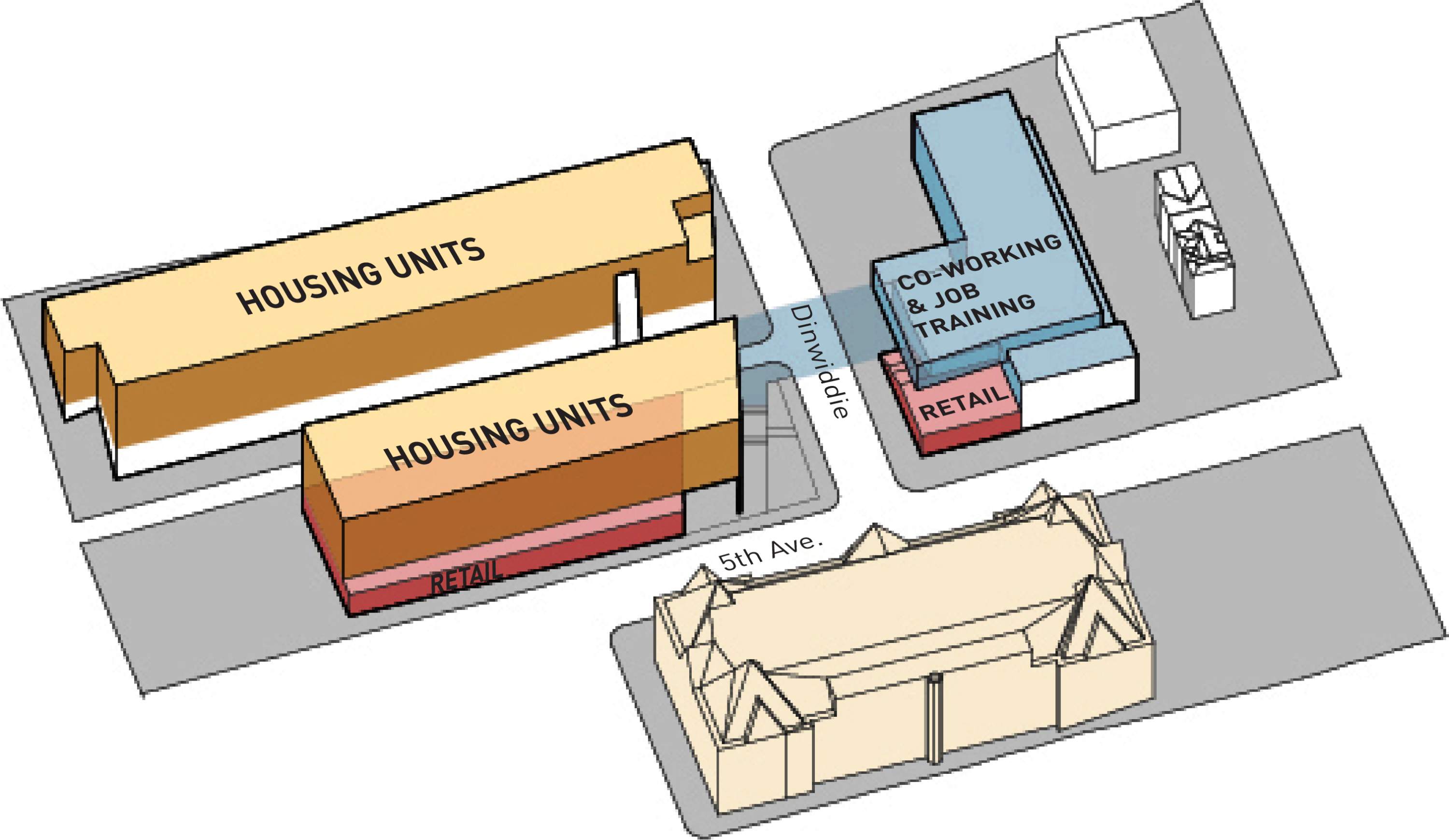
On the east site, the development will nearly double the size of a former public works building. While the final program is not yet fully worked out, we know that it will create co-working spaces that will be offered to the community at reduced rates; a dedicated space for clean energy job training; and a welcoming public terrace.
The west site, currently a parking lot, will support the goal of development without displacement by adding 170 units of housing – 20% of which will be affordable. While providing a series of amenities for its residents (including a community room, lounge, and roof deck), the west site will also add retail at the ground level to support the day-to-day life of the community.
There’s so much to appreciate about this project. But something that we’re especially excited about is that the buildings at each site are being designed to Passive House standards. While it is often perceived as an ambitious, complex, and expensive standard that would put additional hurdles in the way of the social and economic goals of the project, we have found that meeting Passive House standards provide opportunities to better meet the developer’s pro-forma (budget, schedule, and leasing/income plans) and to support the long-term stability and quality of life for both commercial and residential tenants.
What Is Passive House?
Passive House is a high-performance building standard that emphasizes tightly insulated enclosures, heat recovery, and monitors airflow to reduce energy consumption. In Europe, where energy prices have typically been higher than in the US, Passive House has been a particularly attractive building standard for home construction, because it uses only about one-fifth of the energy of the average US household. As a result, the extra investment in the building envelope reduces equipment size, creating immediate operational savings and a short payback period. In Brussels, Passive House standards have been integrated into regional building codes, requiring that all housing, schools, and offices meet Passive House standards.
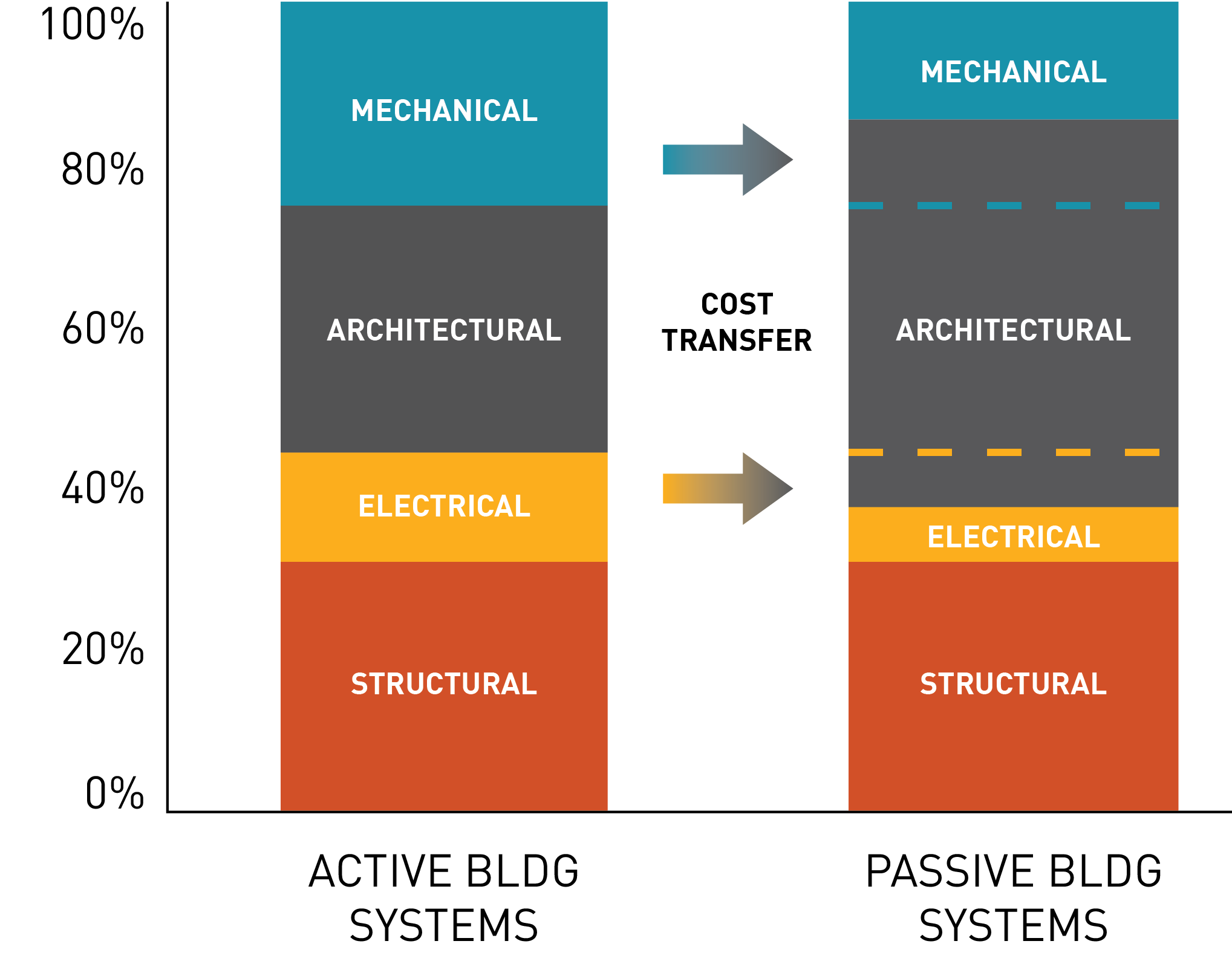
The United States has historically lagged in terms of embracing energy-efficient design, but this is beginning to change. States and local governments—Pennsylvania, California, New York, Pittsburgh, and Baltimore County, to name a few—are beginning to integrate Passive House standards into their energy codes and creating incentives to encourage high performing buildings. A 2019 US Energy Information Administration report estimates that buildings are responsible for 40% of US energy consumption and about 40% of the nation’s greenhouse gas emissions, so we still have a lot of work to do. However, when paired with incentives like those provided by Pittsburgh’s Ecoinnovation District and the Pennsylvania Housing Finance Agency (PHFA), the right regulatory and financial environment can be created to encourage Passive House. They certainly helped at 5th and Dinwiddie.
Passive House offers an effective—and much-needed—strategy for curbing energy consumption and reducing greenhouse emissions. Given its potential for improved energy performance and comfort, any architect or developer who is serious about confronting global warming and building sustainable communities should strongly consider employing Passive House strategies.
How Passive House Works
Passive House is a straightforward concept. The design begins by optimizing the building shape and orientation to capitalize on solar heat gain and then develops a well-insulated, airtight exterior envelope. This will stabilize the building’s internal temperature throughout the year, enabling you to downsize the mechanical heating and cooling systems. Our passive house consultant on the 5th and Dinwiddie project, Auros Group, aptly compares a Passive House building to a good thermos – hours later, it retains its heat. In fact, a Passive House building can even lose power for hours while maintaining a stable, comfortable environment.
Ventilation also plays an important role. Decoupled from the heating and cooling system, a heat recovery ventilation system can transfer heat that would be lost from stale exhaust air to fresh intake. This maintains almost constant ventilation and results in excellent indoor air quality.
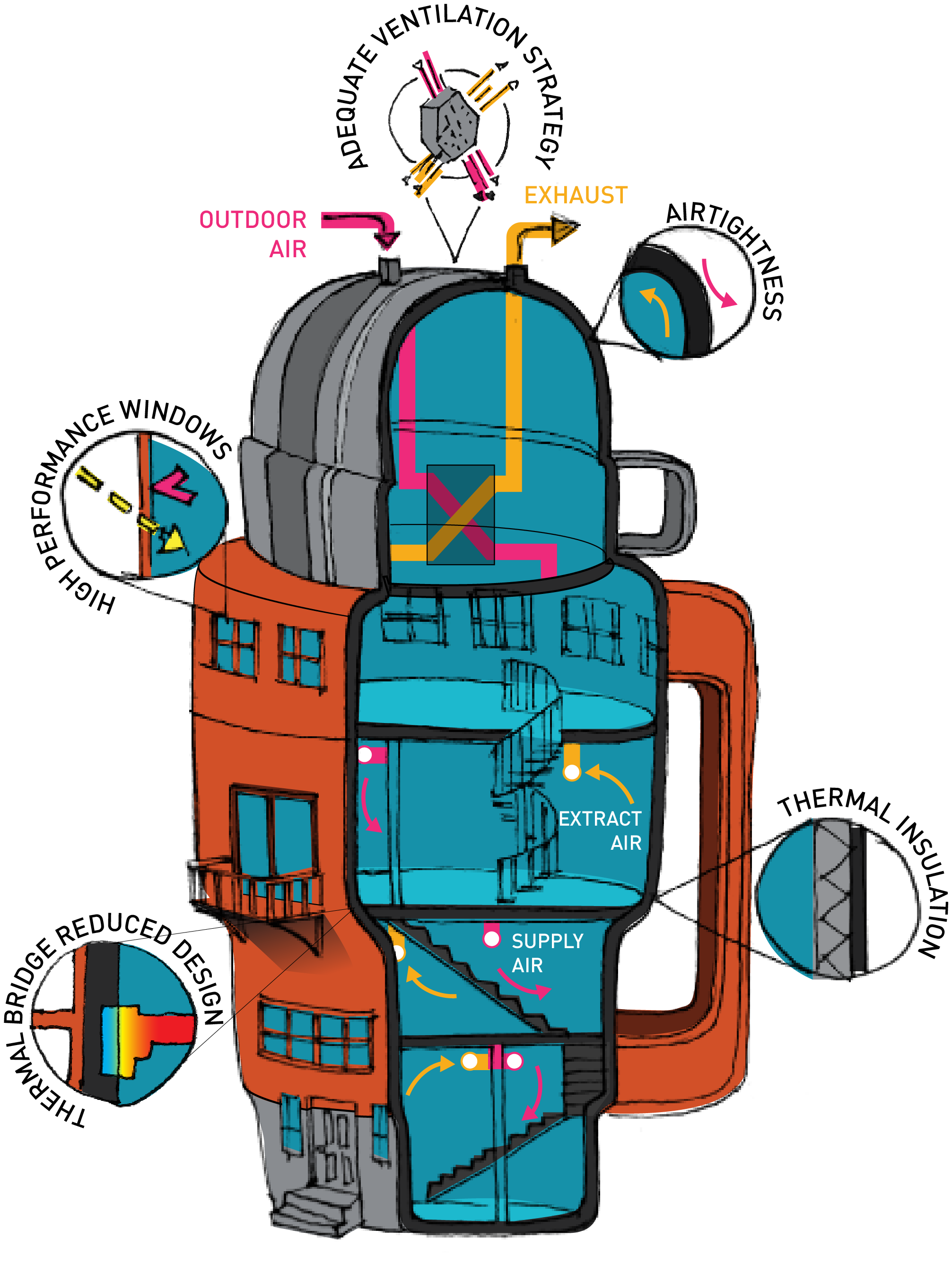
The resulting cost savings and consistency of energy use is especially valuable for affordable housing projects, because it prevents cost-burdened tenants, who often pay a larger percentage of their income on utilities, from being saddled with unexpectedly large bills in summer or winter months. Public dollars for housing can go farther when utility costs do not create an additional burden.
Passive House buildings are also palpably more comfortable because the internal temperature remains consistent as the outdoor temperature fluctuates. The carefully detailed and constructed exterior assembly allows users to comfortably sit at a closed window without feeling a draft or hearing as much outdoor noise.
Passive House design clearly prioritizes the building envelope and requires more upfront testing and energy modelling, but it still allows a lot of flexibility in terms of design. It may be easier to use materials and products that are already Passive House-Certified because their thermal behavior is well-documented. However, taking budget into consideration, a well-designed, analyzed, and constructed building of almost any material can meet Passive house requirements and result in a 60-85% reduction in energy use..
Successfully Developing Passive House: Some Strategic Considerations
Sustainability. Though Passive House mandates some commonsense sustainability tactics, it’s not a fully comprehensive sustainability strategy. It leaves out important considerations such as material sourcing, water management, and the management of construction waste. This isn’t a weakness of Passive House design; it just means that it is incumbent on architects and their client to fit Passive House into a broader sustainability strategy.
Understanding these limitations, our 5th & Dinwiddie team worked with Auros Group to lead an Owner’s Performance Requirements Meeting to articulate the larger sustainability strategy that our Passive House design would fit into. At that meeting, we decided that while pursuing Passive House certification, we would meet additional sustainability and wellness standards, including RESET Air, C-PACE, as well as Pittsburgh’s P4 Performance Measures, and the city’s 2030 Challenge. This meeting was not only valuable for determining the larger sustainability and resiliency vision for the project, but it also fostered buy-in for the strategy from the client and the entire design and construction team. As part of GBBN’s Sustainability Action Plan, we are incorporating similar sustainability goal setting workshops on all projects.
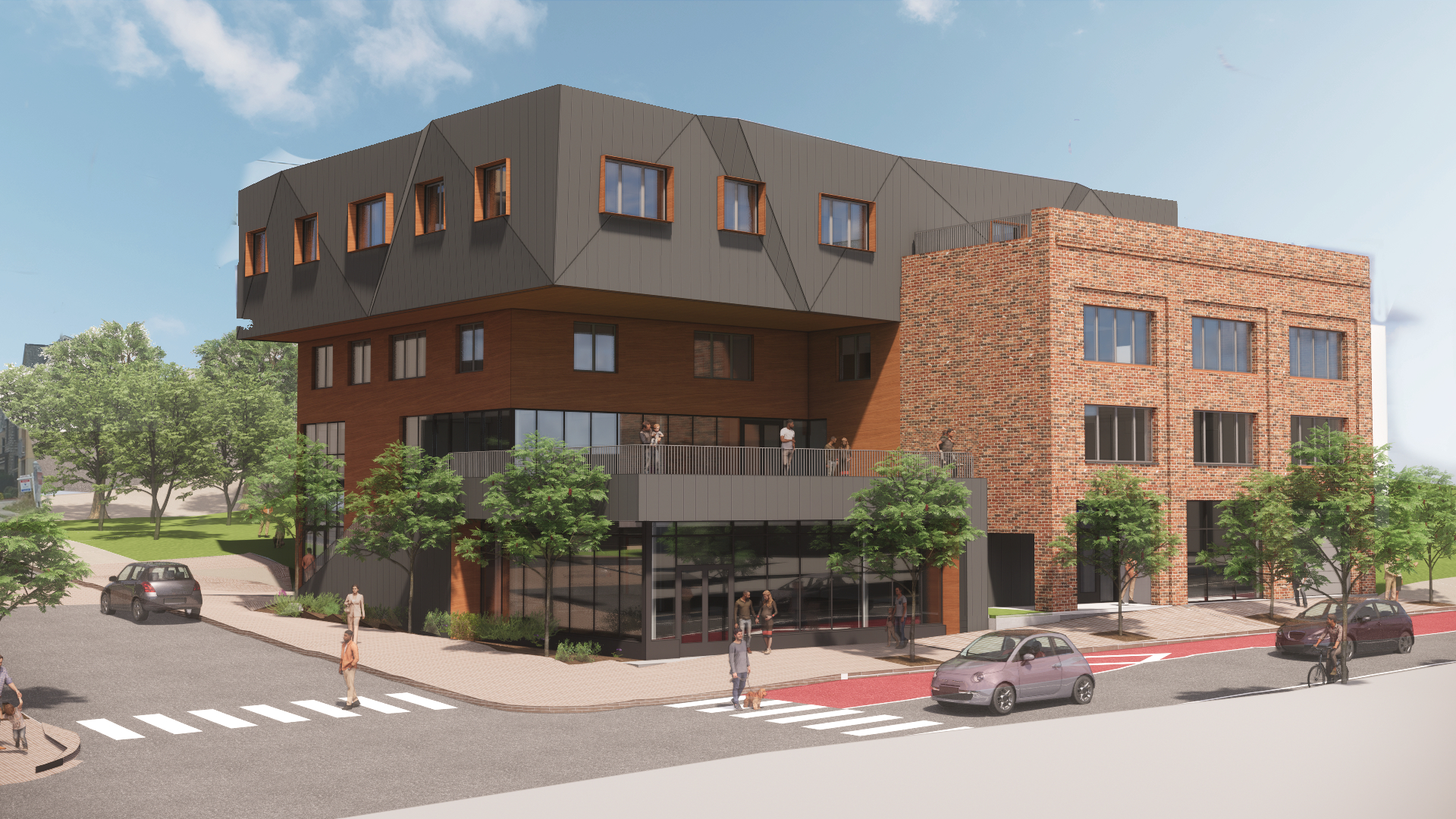
The Value of Experience. It’s also important to acknowledge that Passive House involves a learning curve. While a lack of familiarity with it, makes some developers hesitant to pursue Passive House, it can also meet resistance from consultants who aren’t sure if the ‘downsized’ mechanical system is up to the job. Having an experienced architect or consultant to guide you through the project is essential. They can meet with clients, consultants, and contractors to share data and assuage doubts. By the time you start your second Passive House project, the process will be easier.
Affordability. Part of the learning curve, Passive House can also involve a 5-10% premium when first introduced into a local market. However, this premium tends to be smaller on multifamily housing, and it quickly shrinks—or even disappears entirely—as local knowledge of Passive House becomes more widely diffused. Within three years of incentivizing Passive House design, the Pennsylvania Housing Finance Agency found that Passive House went from being 5.8% more expensive than conventional construction to 3.3% less expensive.
But even with a premium, Passive House can still make financial sense. With the cost of energy expected to rise in the coming years, any upfront investment in Passive House quickly pays for itself in lower operating costs.
A proven, environmentally responsible design strategy, Passive House’s time has come. As state and local governments have begun to create the right conditions to incentivize high performance buildings, it’s time for architects and their clients to pursue Passive House design. It’s not only cost-effective, but it’s the right thing to do.
